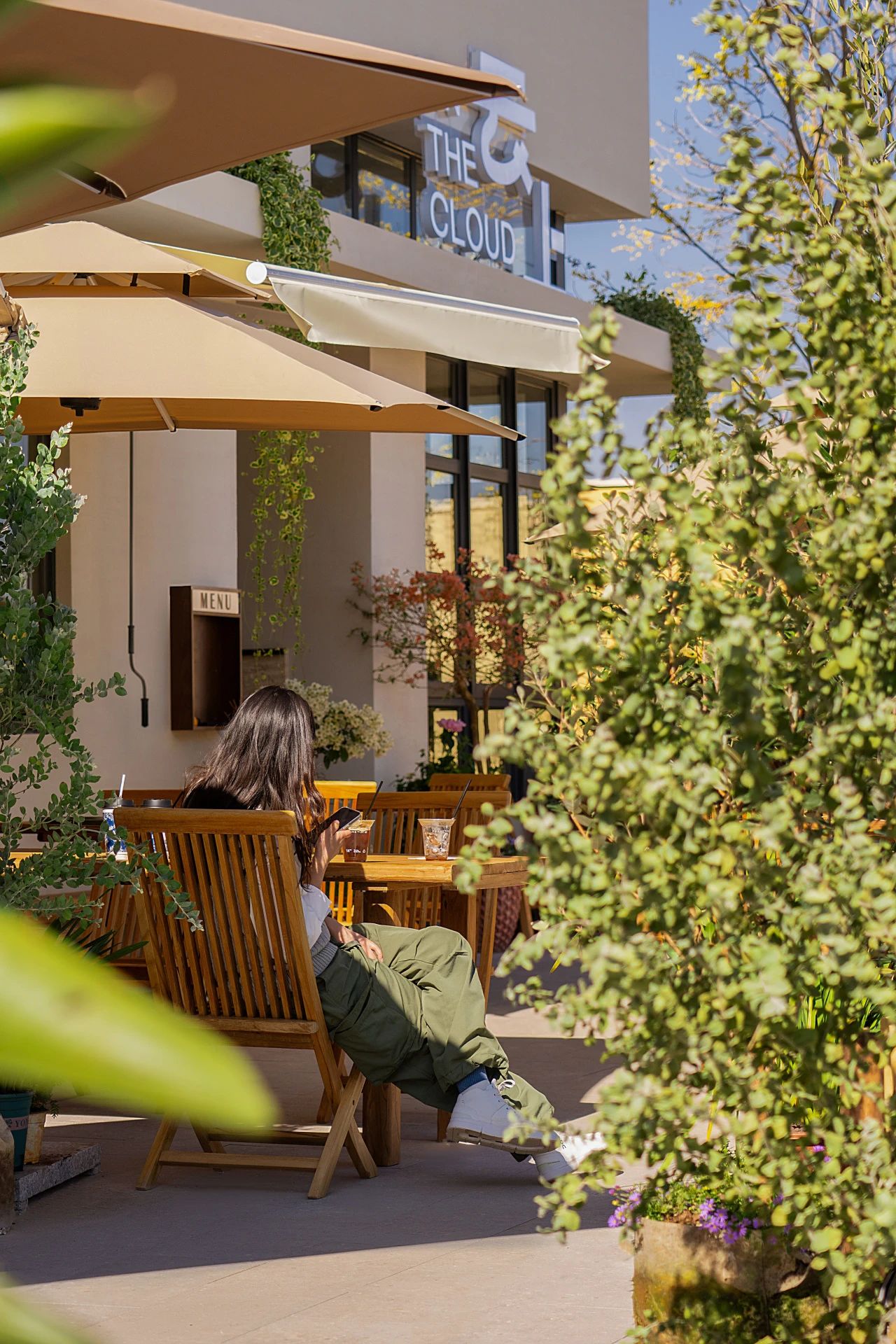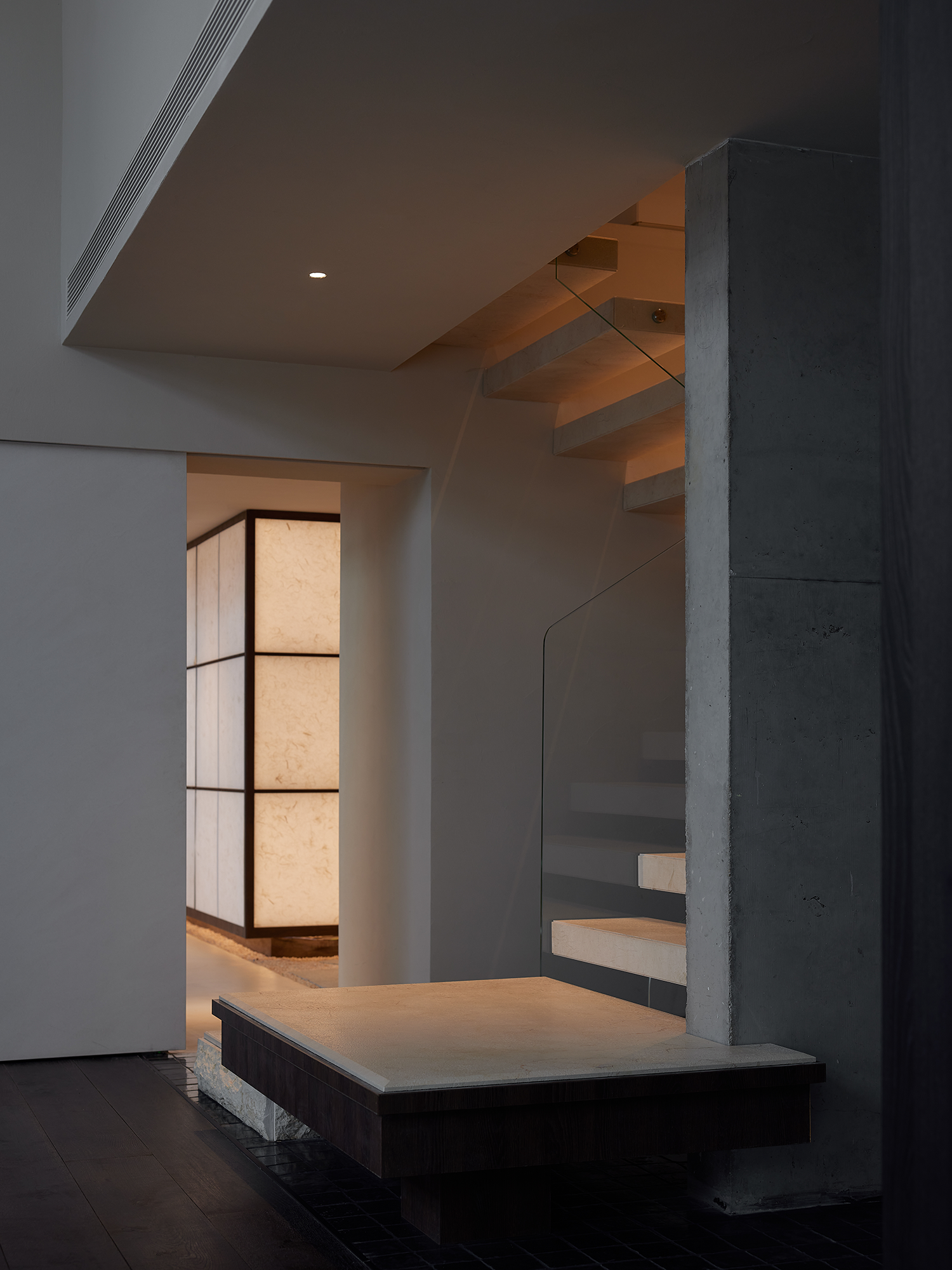Seoul Coffee LABOTORY
2018-05-17 00:00
© Yongjoon Choi
蔡永俊


架构师提供的文本描述。首尔咖啡希望营造一种让人联想起20世纪80年代和90年代首尔的氛围。与其使用新的物品来完成那些时间的完整重现,倒不如把重点放在使用那些从过去保存下来的物品上。因此,第一个被选中的地点是在伊克森东的哈诺克村.组成专营权一部分的蒙元东分店被挑选出来,是为了在此基础上发挥保留古典风格的这些方面。但自然地,在使用/保存旧物品方面也存在挑战。仅仅因为老了还不足以保证一件物品的使用。我们需要几个项目,即使它们是新的,也能给人一种古典的感觉。必须指定地点,这些项目可以放在哪里,以创造一个概念和确定总体布局。
Text description provided by the architects. Seoul Coffee aspires to create an atmosphere reminiscent of Seoul in the 1980’s and 1990’s. Rather than doing a complete re-enactment of those times using new items, the focus is on using items that had been preserved from the past. As such, the first site selected was in the Hanok Village in Ikseon-dong. The Mongwon-dong branch that forms a part of the franchise was selected for the elements that could be built upon to play up these aspects of conserving a classical style. But naturally, there were challenges in using/ conserving old items. Simply being old was not enough for an item to warrant its use. We needed several items that would give a classical feel even if they were new. Spots had to be designated where these items could be placed to create a concept and determine the overall layout.
© Yongjoon Choi
蔡永俊




© Yongjoon Choi
蔡永俊


首尔咖啡,Ikseon分店首尔咖啡Ikseon分行是少数剩下的Hanok(韩国传统房屋)在首尔。这既是一种优势,也是一种弱点。这个项目要求我们在克服弱点的同时突出优势。
Seoul Coffee, Ikseon branch Seoul Coffee Ikseon branch is one of the few remaining Hanok (traditional Korean houses) in Seoul. This served as both a strength and weakness. The project required us to highlight the strengths while working around the weaknesses.
© Yongjoon Choi
蔡永俊


第一步,铺设基础,不包括大门,外墙需要进行重大改造。一旦进入,这个结构就不适合作为咖啡厅使用,除非是在Hanok结构中通常能找到的柱子。最重要的是,没有一个空间作为一个庭院,通常增加一个有趣的触摸汉诺克结构,阻止充足的阳光进入内部。因此,需要仔细考虑哪些部分必须拆除,哪些部分完好无损。最后,我们决定不仅拆除现有的墙壁,还决定将自然阳光带入室内,并发挥庭院本应发挥的作用。第二,在墙壁上做了彻底的诊断,可以用来保存可以使用的。在拆除墙壁的过程中,我们发现墙纸被多层覆盖以形成有趣的图案,或者砖块和粘土形成了有趣的混合。这些墙完好无损。
Step 1. Laying the groundwork Excluding the main entrance door, the exterior façade needed major re-work. Once inside, the structure was not one conducive to be used as a café except for maybe the columns typically found in Hanok structures. Most importantly, there was no space that served as a courtyard that usually adds an interesting touch to Hanok structures, preventing sufficient sunlight from entering inside. As such, careful consideration was needed as to which parts had to be dismantled and which parts left intact. In the end, we decided not only to remove the existing walls but also the ceiling to have natural sunlight be brought indoors and serve the function that would have been served by a courtyard. Secondly, a thorough diagnosis was made on the walls that could be used to keep those that could be used. During the process of dismantling the walls, we discovered areas where wallpaper had been covered in multiple layers to create an interesting pattern, or where the bricks and clay created an interesting mix. These walls were left intact.
© Yongjoon Choi
蔡永俊




© Yongjoon Choi
蔡永俊


第二步。在奠定基础和完成拆除工作之后,设计和施工具有独特的特性,设计和施工中纳入了有助于首尔咖啡独特特性的各种物品,在那里,最近制造的“古典物品”将以一种乡村的方式与环境相协调。特别引起注意的物品之一是如今很难找到的理发店的招牌。在20世纪80年代和90年代,这种标志在首尔很常见,但现在已不再如此。我们改变了标志的材料和细节,把它水平放置,而不是垂直放置,因为它是几十年前使用的,以创造一个独特的标志,捕捉首尔咖啡的身份。
Step 2. Giving a unique identity After laying the groundwork and completing the dismantling, the design and construction were carried out to incorporate various items that can contribute to the unique identity of Seoul Coffee, where “classical items” that were in fact manufactured recently would harmonize with the setting in a rustic manner. One of the items that draw particular attention is the signage of a barber’s shop that is nowadays difficult to find. Such signage was common in Seoul during the 1980’s and 1990’s but are no longer so. We changed the material and details of the signage and placed it horizontally rather than vertically as it was used several decades ago, to create a unique signage that captures the identity of Seoul Coffee.
© Yongjoon Choi
蔡永俊


第二,使用玻璃块。虽然这些东西现在被普遍使用,但它们也是引发怀旧情绪的材料,就像它们在当时的浴室、医院和建筑走廊中普遍使用一样。有趣的是,这些玻璃块与Hanok结构也很相配。第三,我们特别注意带来一种独特的韩国感觉。“韩国感觉”与广义上的“亚洲感觉”不同。日本、韩国和中国的文化虽然相似,但也有其独特的特点。我们认为,韩国风格之所以在不同的亚洲风格中脱颖而出,在于强调“自然”方面。因此,使用了这些方面的材料,包括过去用作磨石的花岗岩,以及使地板和外线之间的界线模糊不清的砾石。这些也是把旧的和新的结合在一个乡土的汉诺克环境中的元素。
Secondly, glass blocks were used. While these are commonly used these days, they are also materials that trigger nostalgia, as they were commonly used in bathhouses, hospitals, and corridors of buildings back in the day. Interestingly, these glass blocks went well with the Hanok structure, too. Thirdly, we paid particular attention to bring out a uniquely Korean feel. A ‘Korean feel’ is different from an ‘Asian feel’ in a broader sense. While the cultures of Japan, Korea, and China are similar to one another, they also have unique characteristics that set them apart. We believe that what makes the Korean style stand out amongst different Asian styles is the emphasis on “natural” aspects. As such, materials that would bring out such aspects were used, including granite that was used as grinding stones in the past and gravel to blur the line between the floor and the outer lines. These are also elements that bring together the old and new in a rustic Hanok setting.
© Yongjoon Choi
蔡永俊


第三步。方便用户首尔咖啡是一个项目,随着时间的推移,开发与客户谁是一个视觉设计师,通过不断的工作软件,将图像的生命。因此,非常注重细节,包括冰淇淋包装和品牌标识。我们仔细考虑过的另一件事是桌子和托盘的形状。我们甚至计算了表上产品和菜单项的外观,以确定托盘和桌子的尺寸和整理材料。这样做是为了从用户的角度准确地捕捉尺度感,以便在达到审美标准的同时尽量减少任何不便。
Step 3. Convenience for the users Seoul Coffee was a project that was developed over time with the client who is a visual designer, by continuous working on the software that would bring images to life. As such, great attention was given to detail, including the ice cream packaging and logo of the brand. Another item we gave great thought to was the form of the table and trays. We calculated even the look of products and menu items on the table to determine the size and finishing material for the trays and tables. This was done to accurately capture the sense of scale from the user’s point of view to minimize any inconvenience while living up to aesthetic standards.




























































Architects LABOTORY
Location 166-31 Ikseon-dong, Jongno-gu, Seoul, South Korea
Area 120.0 m2
Project Year 2017
Photographs Yongjoon Choi
Category Adaptive Reuse































